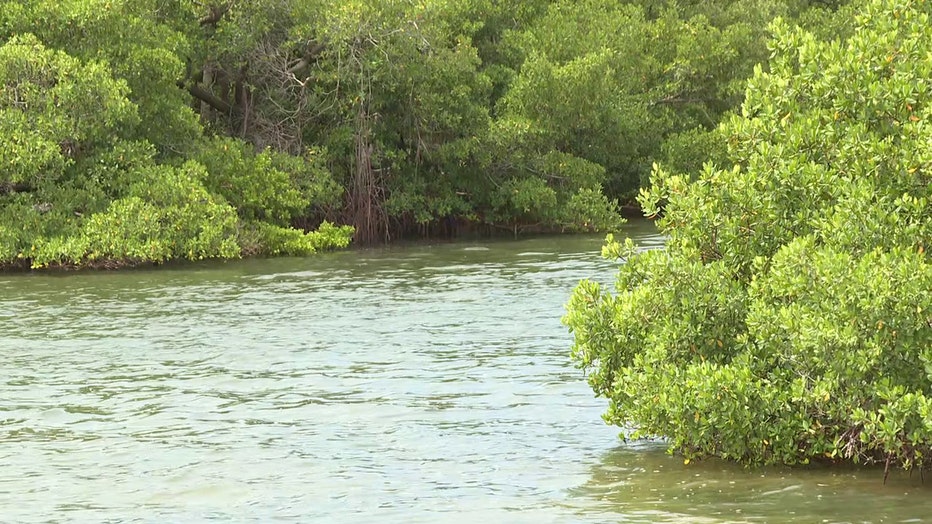Mote Marine documents impacts from Debby on Sarasota Bay
SARASOTA, Fla. - Tropical Storm Debby brought flooding to Sarasota and exposed problems with overdevelopment, all of which poured into Sarasota Bay.
"All of that tied together can create extra run off into the bay, storm water runoff," said Dr. Emily Hall, a senior scientist and program manager at Mote Marine Laboratory. "We have less green spaces that can absorb some of that water and clean it before it makes it to the bay, and so we are kind of seeing a multitude of effects here."
Hall said science speaks for itself. Two days after Debby passed, she began collecting water samples and discovered very low oxygen levels and elevated nutrients.
READ: Manatee officials tour Lake Manatee Dam site amid flooding concerns from residents
"Some of the biggest things we saw was really low oxygen levels at the bottom throughout the bay, and we saw elevated nutrients," Hall said. "Those are especially concerning, because it’s some of the highest concentrations of nutrients that we have seen since I’ve been working at Mote and even longer when my colleagues were running that same program."

Low oxygen can cause fish kills and higher nutrients can cause an increase in bacteria and algae blooms.
"It is a little bit of a wake-up call with our development and with how we are treating our environment," Hall said. "It doesn’t mean we shouldn’t develop, it doesn’t mean we shouldn’t grow, but we just need to do it conservatively. We need to understand the environment as we are doing it."
On Longboat Key Beach, the Friday before Debby passed, there were sea turtle nests as far as the eye could see. Three days later, a total washout of 1,231 nests were recorded.
MORE: Sarasota sober living home working to rebuild after flooding from Debby: 'It's so important'
"It was definitely more of an impact than I think we were expecting in the moment," said Melissa Macksey, a senior biologist and the conservation manager for the Sea Turtle Conservation Research Program with Mote Marine Laboratory.

Mote Marine Laboratory believes the turtle numbers will still rank high, but said loss of habitat increases each year.
"It’s the loss of the habitat especially related to those storms and the more armored sea walls that we have that are then causing more erosion," Macksey said. "Beaches are getting smaller and smaller, and them not having other habitats to use in place of those nesting habitat."
While Sarasota Bay is expected to bounce back, Hall said it will take time. She said each storm or flood that occurs will continue to cause problems.
"We need to have better infrastructure that can handle storm water, we need to continue to manage our natural resources like our mangroves and seagrass beds, because the healthier we keep them and the more we keep them, they can withstand some of those changes," said Hall.
To report problems seen on Sarasota Bay or any other local waterway, visit visitbeaches.org/map.
WATCH FOX 13 NEWS:
STAY CONNECTED WITH FOX 13 TAMPA:
- Download the FOX Local app for your smart TV
- Download the FOX 13 News app for breaking news alerts, latest headlines
- Download the SkyTower Radar app
- Sign up for FOX 13’s daily newsletter

